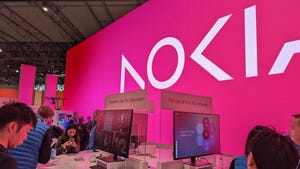Bayobab takes aim at Africa's digital divide with help from Eutelsat OneWebBayobab takes aim at Africa's digital divide with help from Eutelsat OneWeb
MTN's carrier unit Bayobab has struck a deal to use Eutelsat OneWeb's low Earth orbit (LEO) satellites to improve enterprise connectivity and provide mobile backhaul services.
August 15, 2024

The agreement covers Bayobab's entire footprint – which currently comprises fibre networks in seven sub-Saharan countries, plus access to 20 major subsea routes that boast a combined 235 landing stations, and 64 PoPs in 47 countries globally.
Bayobab has rolled out an impressive 114,000 km of terrestrial fibre and is on track to grow to 135,000 km by 2025, but it needs a helping hand from non-terrestrial network (NTN) tech to get into those hard-to-reach rural areas.
"At Bayobab, we're passionate about being at the forefront of harnessing technology to empower people and businesses across Africa. Our partnership with Eutelsat and the integration of OneWeb's LEO satellite services into our solutions is a testament to this commitment," said Bayobab CEO Frédéric Schepens. "This collaboration brings cutting-edge digital connectivity to even the most remote corners of the continent and reaffirms our promise of 'Connecting Africa' – a promise rooted in partnership and driven by a vision of a digitally inclusive future."
Services have already gone live in four undisclosed markets. Bayobab and OneWeb plan to extend their partnership to the whole continent by the end of 2024.
Each one of Eutelsat's 630 OneWeb satellites offers maximum throughput of 195 Mbps on the downlink and 32 Mbps on the uplink, while latency comes in at less than 100ms.
While it's not that fast compared to fibre and 5G, it's better than nothing, and unfortunately, when it comes to broadband, there is still a whole lot of nothing in Africa.
Mobile subscriber penetration in sub-Saharan Africa reached 44 percent in 2023, according to figures from the GSMA, up just one percentage point on 2022. It is not expected to reach even 50 percent by the end of the decade.
3G remains the dominant technology, accounting for 55 percent of mobile connections, compared to 31 percent for 4G and just 1 percent for 5G. Mobile data traffic per connection averages 2 GB per month, compared to 14 GB in Asia-Pacific (excluding Greater China); 17 GB in Europe; and 29 GB in North America.
The divide is even wider when it comes to fixed services.
According to Omdia, there were just 18 million fixed broadband subscriptions in sub-Saharan Africa in 2023, representing a penetration rate of 7 percent. By way of comparison, stats compiled by Omdia and Point Topic show that in the EU, 97.7 percent had access to at least one fixed broadband technology in 2023.
Coverage isn't the only barrier of course – GSMA figures from 2022 highlight sub-Saharan Africa's yawning usage gap. Some 680 million people have at least one form of mobile Internet coverage but do not access it for a combination of reasons including affordability, a lack of digital skills or gender. Indeed, the GSMA's most recent Mobile Gender Gap report revealed that of the 785 million women in low and middle-income countries that don't use mobile Internet, 200 million live in sub-Saharan Africa.
If by using LEO satellites, operators like Bayobab can lower some of these barriers and narrow the divide, that can only be a good thing.
About the Author
You May Also Like










.png?width=300&auto=webp&quality=80&disable=upscale)


_1.jpg?width=300&auto=webp&quality=80&disable=upscale)